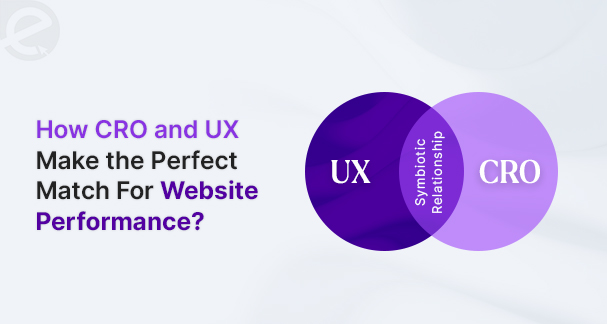
We Develop Websites Keeping Marketing in Mind
What Are the Popular Backend Frameworks For Web App Development?
 Sep. 01, 2023, 11:59 AM
Sep. 01, 2023, 11:59 AM- By Eclick Softwares and Solutions

Backend frameworks can be defined as powerful sets of tools, components, and libraries containing server-side languages much important in supporting a website's backend as well as developing dynamic web applications. The backend frameworks are the server-side frameworks meant to ease out web development and make it faster, thereby automating different web app development steps.
Web developers can easily leverage the pre-existing structures, modules, and tools apart from writing each code line in different languages. Web developers are thus capable of creating the logic and functionality in a web application easily owing to these frameworks. Controlling the web application actions is now possible.
The Different Types of Web Frameworks
There are two primary types of web frameworks which include –
a. Client-Side (Frontend)
A client-side or front-end framework helps at improving and implement a new user interface. It is not at all connected with business logic. So, it takes into account the work taking place in the browser.
Implementing many animated traits becomes easier with Single-Page Applications (SPAs) and front-end development frameworks. Because of its functions and use, no client-side frameworks will be similar.
b. Server-Side (Backend)
Landing pages, simple pages, and different forms can be created with the proper use of server-side or backend framework architecture. Other than delivering output data, it helps in boosting security at the time of web attacks. Primarily, the framework works on essential and accurate details for the app to properly function. With these vital characteristics, the backend development process becomes easier.
The Notable Advantages of Using Backend Development Frameworks
As server-side frameworks, backend frameworks provide a foundation for web developers to set up web applications. Web developers can handle the tasks like database operations, server-side logic, and overall functionality as well as backend structure.
Using the backend development frameworks, web developers build robust and scalable web applications with pre-built components and libraries. Furthermore, it is offering several other features such as session management, routing, database integration, and authentication.
Website development becomes a simpler and faster process with the help of advanced tools, libraries along with the other features of backend web development frameworks.
Modularity
With the help of code modularity, web developers can write better codes. They break down complex tasks into smaller and better manageable segments. Hence, those components can be easily developed, tested, and maintained. Even these are rendered error-free, scalable, and maintainable code.
Scalability
There are in-built tools in backend frameworks for web development to facilitate distributed computing, caching, and load balancing. All these features are providing a foundation for scalable and robust web applications, thereby distributing the workload across numerous servers. Therefore, the developers can optimize a website for handling rising users count and requests without impacting performance by selecting a suitable backend framework.
Performance
The developers optimize code for maximum efficiency and minimize resource usage thanks to backend frameworks. They can better deploy agile practices to manage caching, indexing, and updating databases to enhance development.
Security
Often the backend frameworks are built with built-in security features and functionalities, thus safeguarding the web applications from the dangers of unauthorized access and data leaks. Since the modules and libraries can automatically validate as well as sanitize user inputs, the developers can prevent common security vulnerabilities which include cross-site scripting (XSS), cross-site request forgery (CSRF), and SQL Injection.
Integration and Development Simplifications
Backend web development frameworks are providing a standardized structure and pre-built tools to streamline the development process. The pre-written code libraries, guidelines, and modules accelerate development. Furthermore, it allows the web developers to remain focused on the core logic and functionality of the web application without wasting any time on continuing with repetitive tasks such as handling the HTTP requests.
The Most Popular Backend Web Development Frameworks for Next-Gen App Development
The market is offering a vast choice of web development frameworks. Helpful contributions to these frameworks are available from the GitHub repositories community members. Here is the list of the top ten backend frameworks for web app development.
1. Express.Js
A lightweight and flexible web development framework for Node.js allows developers to easily create server-side web applications and APIs. It enables a minimalist approach to web app building so that web developers can build the applications as per their specific needs. Express.JS comprises of a powerful routing system for developers to define handling the web requests and creating complex routes. Even it includes a wide range of middleware so the developers can add functionality easily to the apps, like authentication, logging as well as error handling.
2.Django
Django is a reliable open-source backend framework that is written in Python. It ensures incredible scalability and fast development. Djano assures the complete safety of web products concerning cybersecurity since the platform prioritizes security.
3. Ruby on Rails
Written in the Ruby programming language, Ruby On Rails is an open-source backend web application framework based on the (Model-View-Controller) MVC architectural pattern. This tool is much popular for complex web application development. It provides incredible support from the large and friendly Ruby on Rails community whenever needed.
4. Laravel
Laravel is an open-source backend framework written in the most popular programming language PHP. Again, it is based on the MVC model. It stands tall on simple syntax and numerous packages expanding out-of-the-box API support. Learning Laravel quickly from the tutorial website Laracast is easier since it contains many helpful videos.
5. Spring
An open-source backend framework widely used to develop a powerful enterprise-level application is Spring. This lightweight framework, in terms of size and functionality, is written in Java which helps in maintaining traction in the upcoming years. The Spring framework is a large and active community for improving the platform. Furthermore, it readily helps with real-life use cases.
6. Next.Js
Next.Js is the React-based web development framework meant to simplify the building of server-side rendered React applications. Next.Js has gained popularity among web developers to build efficient and scalable web applications. Server-side rendering capability is the main key feature of Next.Js that provides fast initial load times as well as enhanced SEO capabilities. Even it comprises automatic code splitting using which the developers can optimize the performance of the application by just loading the necessary code for a given page.
7. ASP.NET Core
ASP.NET Core is the open-source development framework that is used to create .NET applications. It makes use of C#code and is the ideal web framework if providing a positive user experience is the priority. This highly specialized framework uses JavaScript to build both mobile and web applications to ensure that Windows users get a smooth experience.
8. Angular
Angular is both a platform and framework used to create HTMP and TypeScript-based Single-Page Client Applications by using several features. This open-source Java-based TypeScript language removes unwanted features for development process improvements. Angular frameworks and numerous UI libraries aid in web enhancements with the growth of the Angular community. Angular is appreciated for its adaptability and ease of improvement facilities. Aesthetically pleasing and responsive UI for web apps can be easily and quickly created by using the ready-to-use Angular frameworks for UI components.
9. Node.js
Node.js frameworks are of three main types, namely MVC, Full-Stack MVC, and REST API frameworks. It unifies web app development with a single programming language, that is JavaScript for both client-side scripts and server-side scripts. Node.Js is known to feature an event-driven architecture with asynchronous input and output.
A minimalist Node.js framework Express JS has a simple learning curve. Featuring rapid server-side programming packages, process managers, and template engines, Express JS has asynchronous programming for better performance. It is possible to execute multiple operations independently and simultaneously. Express JS is marked by its scalability, flexibility, and simplicity. It belongs to the part of MEAN, MEVN, and MERN stacks. For more efficient and faster web app development, Express JS provides template code, plugins, routing functionality, and middleware packages. At the same time, the framework enables third-party libraries and features integrations for easing out customization.
Derby.js deserves special mention to explain the Full-stack MVC framework. Based on Node.js technology, Derby.js is a full-stack web app development framework that uses an MVC framework with easy-to-write coding nomenclature. This is a great selection to create real-time apps since it enables the same code to run on the Node.js server as well as the browser.
10. React
React is the part of JavaScript language with many advantages for web app development. React-built web apps are simple to scale since it uses a single language on the client/server/mobile sides. Hence, it assures outstanding productivity. For convenient teamwork, there are workflow patterns. Moreover, UI code is both readable and maintainable.
Backend frameworks have become an essential part of web development. Selecting the right one is very much important to successfully execute the web application. Each framework is built on unique features, hence making the selection ideal for particular web app requirements. From the discussed backend frameworks, these are to be evaluated to determine which is the most befitting one for the project. Rapid development, scalability, support, versatility, and security matter most.
Related Blog
- By Eclick Softwares and Solutions
- November 21, 2024
Why Good UX Design Mean B ...
UX creates a verified impact on CRO for a website. The users ...
Read More- By Eclick Softwares and Solutions
- November 11, 2024
How Important is a Websit ...
Where the customers land and browse to find their needed pro ...
Read MoreSearch Blog...
Recent Posts
Eclick Services







